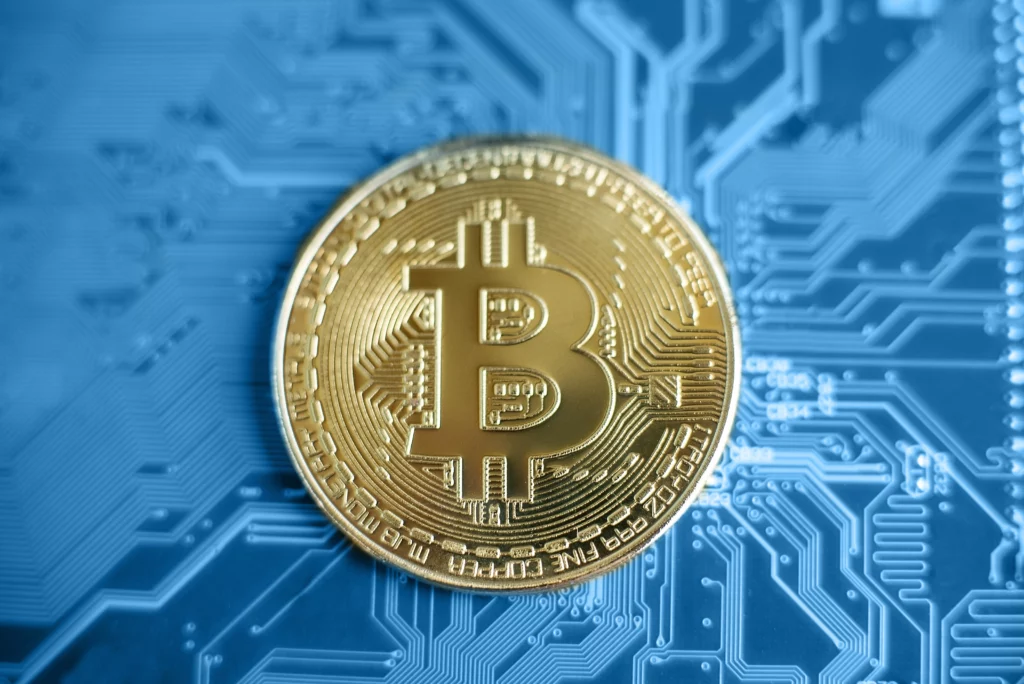Before talking about decentralisation and the birth of blockchain, we must go back to when the internet was first created. Before the internet, people used mail, cell phones, and printed materials to communicate with each other. There was no digital world, no social media, no emails. When the internet was introduced, the world changed. Advertising became more optimised. People could reach each other despite being located on the opposite sides of the world. Digital payment applications were developed. Video games became popular. The internet was Web2.
The development of technology didn’t stop with the internet. Right now, we have the blockchain–a decentralised ledger where all Bitcoin and other cryptocurrency transactions are stored and maintained. The blockchain is the underlying technology of decentralised projects you see online, such as play-to-earn games and NFTs. If you’re a beginner in this space, you’ll learn more about blockchain technology as you explore more decentralised projects.
One of the most technical terms you will hear when you try to dig deeper into cryptocurrencies is “decentralisation.” What does it mean, and how is it being used in the blockchain space?
What is Decentralisation?

You will better understand the concept of decentralisation if you know what centralisation is. Centralisation is a concept where someone controls a system. For example, centralised finance (CeFi). Government authorities and central banks prescribe specific rules and regulations related to money. Central banks, for instance, determine the interest rates on loans. Specific government departments set the price for goods and services. Technically, a centralised system doesn’t allow anyone to set the rules. You have to be authorised to have a voice in every decision.
Decentralisation, on the other hand, is the exact opposite of centralisation. In this system, there is no singular person or entity in control. No one sets the interest rate of loans and the prices for goods and services. Decentralisation gives everyone equal opportunity to participate in decision-making. It’s made by people, for the people. To distribute privileges equally and increase the robustness of networks, decentralised projects today allow members to be signatories, provided that the rest of the members voted for those people. Essentially, everyone who owns a part of the project has the privilege to vote. In this sense, the decentralised market is the freest one.
Another good explanation of how decentralisation works is how developers, artists, and creators are free to build their projects. In a centralised system, not everyone is given a chance to build. If you are developing a business of some sort, you have to comply with tons of never-ending paperwork. You have to wait for the authorities to approve your business application, which takes time. In a decentralised system, you can build projects without approval. Different platforms are available to serve as your foundation. As long as you have the idea and vision, there’s the freedom to explore.
The difference between decentralisation and centralisation is noticeable. Decentralisation means more freedom for everyone. And although there are projects where signatories and leaders are assigned, they give emphasis to the community as the primary driver of blockchain projects.
The Concept of Staking

You’ll find more technical terms within a decentralised system such as staking. Staking is one of the easiest ways to earn money from your cryptocurrencies. If you plan to HODL your crypto for a long time, it’s best to leverage your resources. Your cryptocurrencies don’t just earn through the price increase. You can multiply your earnings by staking them and getting a good percentage of rewards.
But How Does Staking Work Exactly?
The concept of staking stemmed from Proof of Stake (PoS). Proof of Stake and Proof of Work (PoW) are mechanisms that verify transactions in the blockchain. Compared to PoW, PoS is cheaper to undertake since it doesn’t require hi-tech computer equipment.
Nominated Proof of Stake (NPoS)
Proof of Stake has two classifications based on how validators operate. These are Nominated Proof of Stake (NPoS) and Proof of Stake (PoS). In NPoS, there are validators and nominators. Validators need to be active at all times, and they are selected if they meet the minimum token requirements. Each validator on the list has an equal chance of getting chosen to validate, regardless of the number of tokens staked. In NPoS, the rewards are distributed equally among validators. The number of tokens has no relevance to the rewards they will receive. Therefore, with this kind of system, decentralisation is measured by the number of validators. Token holders can choose to stake on different validators to maximise their earnings since concentration on specific validators decreases their yield rate.
Some good examples of blockchain technologies that use NPoS are Ethereum, Kusama, and Polkadot. Ethereum has 222,052 validators, Kusama with 140, and Polkadot with around 1,000.
Proof of Stake (PoS)
On the other hand, the normal PoS doesn’t rely on the number of validators. Instead, validators are selected when they meet the minimum token requirements, and their chance of getting selected depends on the number of tokens staked. Validators in PoS get rewarded proportional to the number of staked tokens. Decentralisation is therefore based on the tokens staked, rather than the number of validators in NPoS. The problem with PoS is that it’s vulnerable to manipulation. For example, if one validator has more than 50% stake, it will receive more than 50% of the total rewards, leaving a lower percentage of earnings to the rest of the other validators.
Solana, Terra, Cardano, Cosmos, and Avalanche are blockchain networks that use PoS. Currently, Solana has more than 1,000 validators, Terra with 130, Cardano with 2,924, Cosmos with 150, and Avalanche with 1,050.
Final Thoughts

Decentralisation is a broad term. But as you dig deeper into the crypto market, you will learn more about the good and bad about it. Overall, it’s a good escape from centralisation. If you are tired of paying high-interest rates on loans and strict KYC processes on banks, then the blockchain space is a good place to explore.









